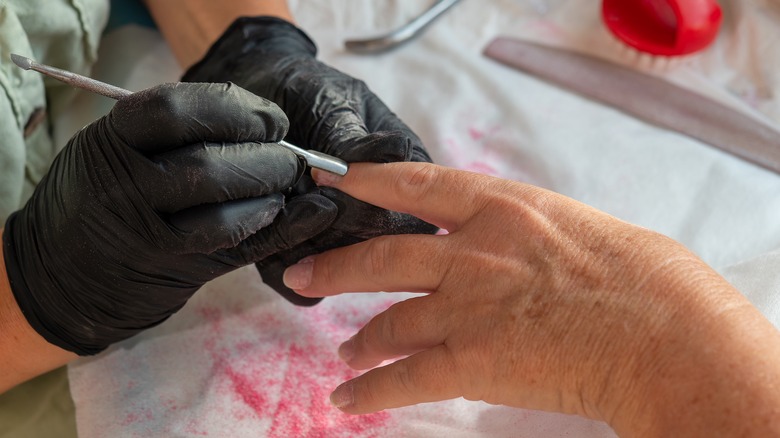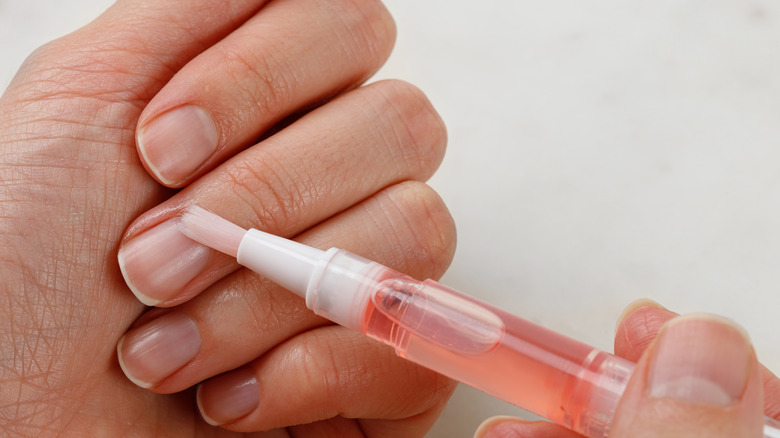What Is A Cuticle Remover & How Do You Use It On Your Nails?
Unless you get regular manicures at a salon, you might not be paying as much attention to your cuticles as you should be. Nail cuticles are the skin around and at the base of your nail plate which provides protection. If you use cuticle oil regularly, the healthier those cuticles will be, which will keep your nail beds looking top-notch; Something that's a must when it comes to having a beautiful manicure.
But when it comes to cuticles, there are two schools of thought: to remove them or to leave them in place. Of course, removing them creates a more striking manicure, but it can also lead to issues. "Cuticles should not be removed, as they serve as protection against microbes; cuticles protect new nail growth against bacterial and fungal infections," nail expert Emmanuelle Dieudonne told Vogue Paris. "They are a critical natural barrier close to the nail matrix: nails are most susceptible to damage during their early growth phase; if the cuticle is damaged, the nail will be damaged as it grows."
Granted, what you choose to do with your cuticles is up to you — as long as you're aware of the possible issues you could be causing. But if you want to ditch your cuticles in the name of a perfect manicure, here's what you need to know.
What is a cuticle remover and is it necessary
If you're thinking a cuticle remover is that tool your manicurist uses when you're getting a mani, you are mistaken. Cuticle removers are actually solvents that are made to soften the cuticles and prepare them to be manipulated healthily, like snipping hangnails and such. "Many cuticle removers contain high-pH chemicals like sodium hydroxide or potassium hydroxide that can irritate your skin, so you'll want to avoid getting this on your skin and leaving it on too long," nail expert Kelley Baker told Well + Good. That's why, to err on the side of caution, read exactly how long the cuticle remover can stay on the skin. After all, you're trying to get your cuticles in good and healthy shape so you can push them back and reveal a long nail bed. Overdoing it with the remover can cause irritation and dryness.
How to properly use a cuticle remover
Although a cuticle remover shouldn't be left on too long, you still want to make sure it's there long enough to do its thing: soften the skin. It's the skin-softening factor that makes cuticle removers necessary because a cuticle pusher can do some serious damage if the skin hasn't been softened and properly prepared. As you may already know, cuts in and around the cuticle can be terribly painful.
"Some cuticle removers require you to apply the remover to one finger, push the cuticle, cut, then remove immediately," celebrity manicurist Mimi D. told Byrdie. "Others allow you to apply the solution and leave it on for the length of time it takes to do the entire hand."
Once the skin feels softened, gently push your cuticle back with a pusher of your choice — one isn't necessarily better than the other, as long as they get the job done. When the cuticles have been pushed back far enough to your liking — don't force it and crack the skin — wipe away the cuticle remover, clean up the nail, and apply cuticle oil or an alternative for an extra protective measure. You now have beautiful cuticles that will stay that way as long you keep them hydrated and trimmed.


